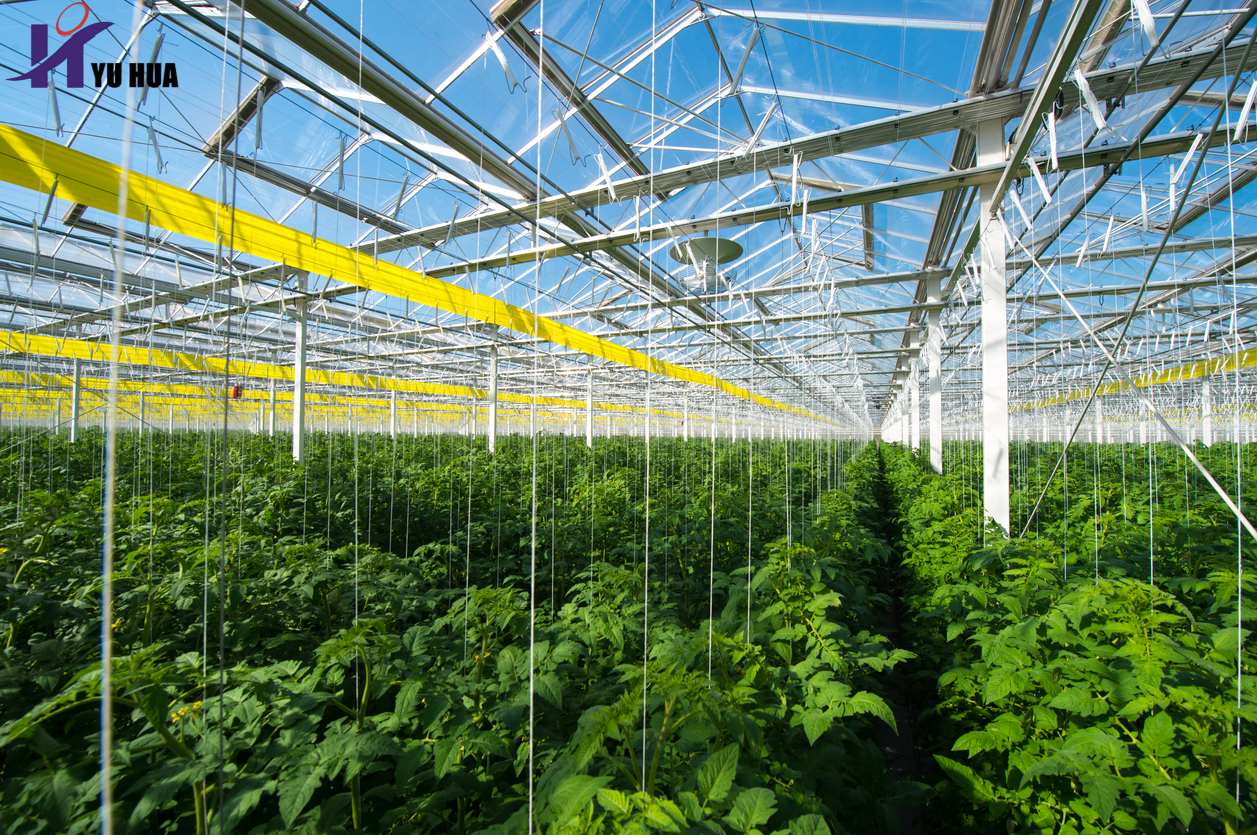
Do we know the advantages and differences of glass greenhouses?
One of the most important questions faced by investors and producers is the difference between glass greenhouses and other greenhouse types. So what decision should you make and what type of greenhouse should you invest in? Next we would like to introduce you to the differences and advantages of Venlo type glass greenhouses. When it comes to greenhouses, the first thing you think of is the Netherlands, which ensures the best food safety.

In the various analyzes you perform before making an investment decision, there is a good chance that your investment decision will go in a different direction than you originally imagined. The following mainly talks about the most important covering material of the greenhouse-diffusing glass.
1- The service life of glass with coating material is calculated as more than 49 years. Since the roof is tempered glass, storms, tornadoes, hail, snow, heavy rain, fires, sandstorms and similar disasters will not cause any damage. However, other short-term coating materials can cause damage in the climate conditions mentioned above and cause damage to any plants beneath them.
2- Since there are no UV, IR and chemical loads on the glass as coating material, no reactions occur in the plants.
3- The glass material used as coating material is a one-time investment. Other short-term coating materials should be replaced after up to 3 years. The biggest problem encountered in this change; due to foreign exchange prices, rising raw material prices, high labor costs, and the lack of professional employees in the market, this is the share every 3 years from the production period of your business. You will also realize that the planting period can be earlier and the production period can be longer, which will bring you economic benefits.
4- Like other coating materials, glass coating materials do not cause or cause moisture in the greenhouse. It allows current moisture to adhere to the glass surface, providing grooves for easy sliding without allowing for surface adhesion coefficient. However, other coating materials, due to their high surface fastness, unfortunately allow moisture from the top of the greenhouse to drip onto the plants, leading to the formation of pathogens such as bacteria and viruses.
5- It is a well-known reality in modern greenhouses that 1% light transmittance results in 1% yield. Glass greenhouses with a light transmittance of more than 97%, especially in the dark winter, have a loss of 4% of the light entering the glass greenhouse, while the loss of other greenhouse types is about 30%. Even in areas with warm climates, such as Antalya, where winter products are produced, glass greenhouses gain overproduction compared to other greenhouse types in the same area. Harvest volumes are already higher in summer production areas. The profit turnover rate of this surplus exceeds 8%. Although the number of closed production sites in winter is larger, due to the light transmittance of the glass, the factory work is at a high level, which is greater than the numerical significance.

6-The glass greenhouse has high light transmittance, and the fruits are more colorful, more uniform and harder, so they have a long shelf life.
In winter, when fruit is more expensive on the market, light penetrates faster and more into the plant, allowing for faster uptake.
7- Yields can be increased by approximately 15% through diffusion fluid, which can be used on the outer surface of glass greenhouses, reducing the use of fogging by 60%, and by eliminating slab heat, the risk of root rot can be eliminated and calcium deficiencies can be minimized .
8-The energy consumption cost of glass greenhouses is 35% to 40% lower than plastic greenhouses. Light and heat penetrate faster when the days are shorter. Due to the optimal measurement of the roof volume dimensions and the advantages of thermal insulation, heat losses are minimal compared to other types of greenhouses. Since the number of reducers is small, the power consumption is also low. The energy-saving contribution of thermal curtains in glass greenhouses is about 40%, and the service life of thermal curtains is about 3 years longer than other greenhouse types.
9- Glass greenhouses can be ventilated easily in 45 - 50 minutes, while other types of greenhouses require opening the roof of the greenhouse and need to be ventilated in 3 - 4 hours. Because the windows of other greenhouse types are in opposite positions, the roof may not be able to be opened in windy weather compared to a glass greenhouse.
Even if it is just a subset of all the advantages, if you realize that a glass greenhouse does have absolute advantages. The light transmittance of Yuhua greenhouse glass can be as high as 99%, and there are 8 haze options including 5/10/20/30/40/50/70/75. Yuhua® also supplies glass to greenhouse project companies such as Havecon, Kubo and Van Der Hoeven. For more information, please contact us at overseas@hnyxlc.com.

Tags:anti-reflective glass diffuse glass agricultural greenhouses glass greenhouse venlo greenhouse AR glass greenhouses glass agricultural glass horticultural glass #greenhouseglass #Antireflectiveglass #Diffusetemperedglass #Ultrawhitefloatglass #agriculturalgreenhouseglass #diffuseglass #horticulturalglass #Tomatogreenhouse #Coloredpeppergreenhouse #Lettucegreenhouse #Agriculturalgreenhouse #ARglass #venlogreenhouse #greenhouseglass #Antireflectiveglass #Diffusetemperedglass #Ultrawhitefloatglass #agriculturalgreenhouseglass #diffuseglass #horticulturalglass #Tomatogreenhouse #Coloredpeppergreenhouse #Lettucegreenhouse #Agriculturalgreenhouse #ARglass #venlogreenhouse #GlassManufacturer #invernadero #ArchitecturalGlass #ClearFloatGlass #FloatGlass
Previous:Glass is the best choice for Dutch style greenhouse construction
Next:What kind of glass is used in glass greenhouses - two options, generating 30% of greenhouse income



















